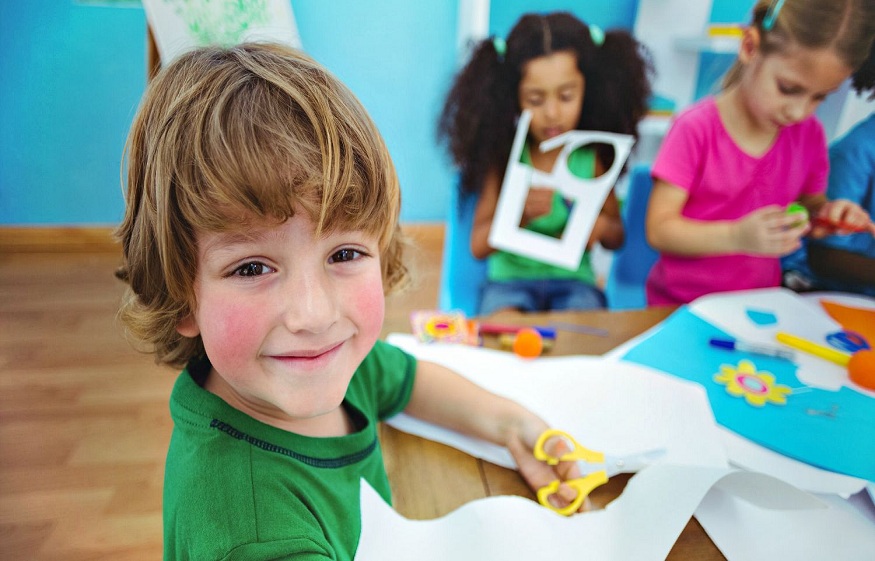I want to be more tactile with my children, meaning I want to be literally more active with them in the day as well as figuratively, I want them to spend more time creating with their hands and feeling the joy of a project conceived and carried out.
DIY OR ARTISTIC IDEAS WITH YOUR CHILDREN
1) Admit to yourself that this is going to be messy. If this stresses you out, line the surfaces with newspaper or butcher paper to catch scraps of paper, glitter, and glue drips. Use materials (glue, markers, etc.) that are washable. Then relax. If you have paint on your hands, that’s okay. If your child puts marker on their shirt, it will wash off. When you’re done, roll up the newspaper and dispose of the mess easily.
2) Don’t present a single firm example of how DIY should go. Either don’t present an example at all, or present several options, so your child knows they can use their imagination. If he sticks eyes instead of ears, good for him – see it as an opportunity to introduce cubism. Their idea is more important than how they execute it.
3) Look for age-appropriate crafts that play to your child’s strengths. If the craft is complicated, break it down into steps and figure out which ones your child can do. For a Harry Potter celebration, we made wands out of paper, hot glue, and paint. My 6 year old could choose the paper, glue the rolled up paper, plug in the glue gun and paint it with craft paint. I took care of the hot glue, the curling of the paper which required more dexterity than her little hands could handle and I handled the metallic highlights we added with a permanent marker. My older children could do more. My younger kids were napping, this was not an appropriate DIY for 2 and under.
4) If you really like DIY, set aside some of the DIY that’s just for you to do. I find that when I don’t do that, I get high and I’m tempted to control what my kids are doing. If I know there are craft materials reserved for me, it’s easier to let the kids do whatever they want. (For example, every Easter I set aside a dozen eggs that are just for me to decorate.)
5) If you’re tinkering on the kitchen table and the tinkering isn’t done, but it’s time to use the table for dinner, it can be frustrating to clean everything up and start over later. If you don’t have a space dedicated to crafting, plan your crafting so that it is completed in a given time.
6) You don’t have to keep it forever. Crafts are often 3-D and can quickly pile up and take up a lot of space. Not everything your child makes is a masterpiece. Say goodbye to some old crafting items when new ones pop into your life – before you start resenting crafting in general. Much of the value of craftsmanship is in the making.
7) It’s not worth running to the store to get the perfect paper/border/detail. Enthusiasm for the project will evaporate if you have to take a break to run errands. Use the materials you have at home.

